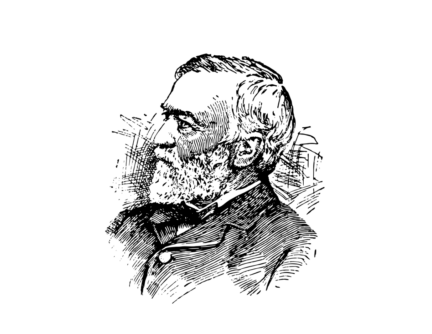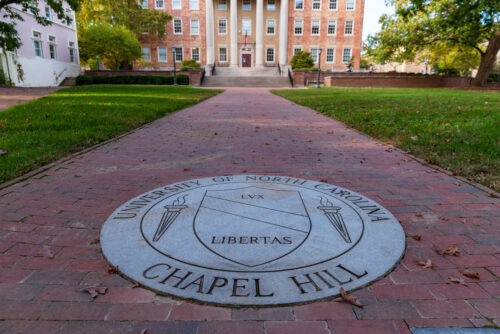There are always new ways for foundations to repudiate their founders’ donor intent. But the Doris Duke Charitable Foundation has come up with a new wrinkle. They are honoring the memory of their founder by tearing down Doris Duke’s childhood home, in which she lived until her death in 1993.
How do you honor your founder’s memory by tearing down her house? That’s a question the Doris Duke Charitable Foundation has to answer.
At stake is a home currently being destroyed in Somerville, New Jersey. (As I write this, about half the house was torn down.) When Doris Duke was growing up the land (known as Duke Farms) was a country estate. It’s now some pretty well off suburbs.
In The Great Philanthropists and the Problem of ‘Donor Intent, I contrasted the wills of Doris Duke and her father, James Buchanan Duke. James B. Duke was a donor who carefully thought out what to do with his money. His will not only specified the causes in which he was interested in, but even listed the percentages that the Duke Endowment had to spend on the causes James B. Duke was interested in. In addition, James B. Duke insisted the Duke Endowment spend its money in North and South Carolina. The result is that the Duke Endowment does a reasonably good job in honoring its founder’s wishes.
Doris Duke, by contrast, did everything wrong. The battle over her will is one of two I know of that was called “the Super Bowl of probate” (the other being Beryl Buck’s will).[1] All you need to know about the long and extremely convoluted fight over the Doris Duke estate is that at one point in 1996, there were 100 motions in court in which various parties in the case accused various other parties of various misdeeds.
(Oh, the other lesson from the battle over Doris Duke’s will is that it’s really not a good idea to hire your butler to be your executor.)
I have not seen the final version of Doris Duke’s will, but the Doris Duke Charitable Foundation said in 1996 that there were no instructions on what they were to do with the money. They said they decided what their mission was to be by looking at causes Doris Duke was interested in and then donating in these areas.
However, Doris Duke did have causes she was interested in, and these are served by operating foundations affiliated with the Doris Duke Charitable Foundation. One, the Doris Duke Foundation for Islamic Art, operates Doris Duke’s Hawaii home as a museum for Doris Duke’s collection of Islamic art. A second, the Newport Restoration Foundation, which was created by Doris Duke, operates Doris Duke’s home in Newport, Rhode Island and preserves and maintains eighteenth-century homes in that city. Finally, the Duke Farms Foundation maintains Duke Farms.
When Doris Duke was alive, Duke Farms had a house and an elaborate garden. The Duke Farms Foundation is in the process of turning the property into a nature preserve with a few vestigial remnants of the home Doris Duke and her father lived in.
The Duke Farms Foundation explains their position in this “Q and A”:
“Didn’t Doris Duke’s will direct that the house be maintained and restored?
Doris Duke left specific instructions in her will to preserve her homes in Rhode Island and Hawaii. Her instructions concerning Duke Farms focused on using the property for agricultural and horticulture purposes, and for the protection of wildlife. Unlike her direction for the other homes, she did not instruct that the house at Duke Farms be preserved.”
In addition, the Duke Farms Foundation claims that it would cost between $10-20 million to preserve and maintain the house. Duke Farms’s executive director, Michael Catania, told Newark Star-Ledger columnist Mark Di Ionno that “the way the residence is structured with plumbing, wiring, and piping, there really is no way to save part of it.” They say that the contents of the house were either given to other museums or sold to add to the Doris Duke Charitable Foundation endowment.
The group opposing the demolition, known as DORIS (Destruction of Residence is Senseless) notes that Doris Duke lived in the house until her death in 1993 and that all of the degradation of the house occurred since then. If I were them, I would also question the estimates of house restoration. Recall in the Barnes Foundation case that one reason the courts allowed the Barnes paintings to be the subject of a worldwide tour in the 1990s was because the foundation claimed it would cost $15 million to bring the museum building up to contemporary standards. I don’t think that estimate was ever challenged, and it should have been.
DORIS makes two points in support of their claim. One was that in 1987 Doris Duke started a process whereby her house would be declared a National Historic Landmark. But, for some reason, the application was never filed. The other is the testimony of Elizabeth McConville, who was Doris Duke’s personal secretary for many years. McConville told Mark Di Ionno that Doris Duke considered Duke Farms home. “This was the place where she grew up and where she spent the most time with her father,” McConville said.
Unfortunately it appears that there is no language in Doris Duke’s will prohibiting the Duke Farms Foundation from tearing down Doris Duke’s house. This makes the case similar to the Belward Farm case, which I wrote about for the Pope Center. Elizabeth Banks and her relatives left her farm in Darnestown, Maryland to Johns Hopkins University for a campus for medical research. The evidence, including testimony from Banks’s nephew and the Johns Hopkins development officer who negotiated the deal in 1989, showed that Banks wanted something like a college campus on her property. Johns Hopkins, however, wanted a denser, town-center like “Science City” on her land. Because there were no restrictions in her will, except that Johns Hopkins had to use the property to conduct scientific research, the courts ultimately ruled in favor of Johns Hopkins.
So the case of Doris Duke’s house reminds donors to put all restrictions in writing. Don’t listen to anyone who says this isn’t necessary. The Belward Farm and Duke Farms cases show that legatees will get away with everything they can, unless they run into firm donor restrictions.
And I repeat my question to the Duke Farms Foundation: How are you honoring Doris Duke’s memory by tearing down her house?
(Thanks to Mark Di Ionno for alerting me to this story, and to Nancy Piwowar and David Brook of DORIS for their help.)
[1]The battle over Beryl Buck’s will, however, was once dramatized on “LA Law.” The Internet Movie Database tells me that Doris Duke was the subject of two made-for-TV movies. In one, she was played by Susan Sarandon, and the other by Lindsay Frost and Lauren Bacall.
Cover Photo: By Siddharth Mallya (Own work) [<a href="http://creativecommons.org/licenses/by-sa/3.0">CC BY-SA 3.0</a>], <a href="https://commons.wikimedia.org/wiki/File%3AFall_Foliage_at_Duke_Farms%2C_Hillsborough_File_2.jpg">via Wikimedia Commons</a>







While Doris Duke did not give Specific Instructions, Article 5 C 1 of her last will and testament state that she hopes and expects that her trustees and those left in charge would hire as many people as necessary to maintain her properties, it’s only later that the term demolish is used , in a much later section of the will for that matter as well. It’s the fact that her will does not specifically state preserve my home in Hillsborough that Duke Farms feels it is acceptable to have the home of the woman who is the very reason they exist torn down, a home she is on record having stated is her favorite of all of her homes. Because she selected her trustees, I’m sure that she expected her will and her love for her home to be honored by them, this wasn’t the case by the people who are responsible for Duke Farms now. In my own analysis of her well, I feel that the phrasing in 5C1 is her saying that she expects the people in positions at her organization’s to respect her will, and the way that she lived her life and to honor the woman that she was. And she was someone who preserved and maintained the things that she loves. Duke Farms, if they choose to continue the demolition have not only destroyed her home then, but have already destroyed and dismantled The Garden of Nations that she so very much loved in her life, on top of this the Orchid range is by no means how it was meant to be.
Martin Wooster is correct “Put all restrictions in writing.”
The problem is you have to think of every scenario. Like do not demolish my house or if a hospital closes what to do with my trust and endowment. Now that is a real problem in New Jersey when hospitals close, the trusts and endowments get re-purposed many,many years after the closures and heirs are not notified. Communities lose the monies that generations before left for healthcare,and in New Jersey urban areas are the main losers.
You don’t have to read very far between the lines to discern the foundation’s intent regarding demolition. Their plan was clearly described as replacing the house with local and indigenous flora– known colloquially as “weeds”– obviously, which require no maintenance or upkeep. Catania is advocating for no one other than himself, merely protecting the source of his income and putting him solidly into the slimebag category. The Duke legacy in Somerville is left without context other than a very badly repurposed and cheaply modernized barn. Very sad for those of us who remember, particularly as the scandal behind it all remains hidden.
All in the Name of Progress?
Agreed Progress can be a great thing.
Disagree that tearing down such an iconic, historic Home site as this Doris Duke Mansion to what end is NOT progress.
I am well aware that putting in a road to go to route 206 is a benefit to both Raritan and Hillsborough, it is a with simple effort to go around the Great and largest Mansion in New Jersey. It is a well known proven fact that the “Duke Damnation Group” let it fall in disrepair. It is also a known fact that in court experts stood up with free help to help with their expert opinion and cost effective ways to use the mansion.
Why would Rutgers STUDENTS be asked how the grounds could be best used, and not trained experts of the area of Somerset County? Foolish indeed!
I who grew up being able to ride on her grounds, who lived on her property, and can testify to certain facts of the area can say within a certain degree of probability that again while progress is good, no good at all will come from destroying the Mansion, removing the World Famous 11 room Greenhouse, nor removing the Duke name and all the good they did in NJ and they did plenty of good and still Doris Duke does today even from beyond the grave. To tear down the mansion, to remove and lay to waste her picture as I saw in a photo. To remove her fathers name from a door even is sheer greed and spite.
Hillsborough, Raritan and Somerset County as a whole will not fare well from this progressive turn of events.
A better more progressive way could of been sought out to please the entire county, and be more effective to all concerned in the long run.
Bill Titus writes: When you read the Q&A from the DFF they tell you of how they are preserving the Duke Legacy, what the don’t tell you is how they have removed the Duke Legacy from Duke Farms. They removed all of Miss Dukes beloved deer from the Estate. It was stated in her will that all the animals be left unharmed on the farm land. I haven’t seen one in many years, not to mention the beautiful albino deer which roamed the Estate from when my grandfather was a boy. Gone…The dairy farm which Buck Duke started and Miss Duke maintained all her life, this was the first to go. The cows were imported from England. Gone… Duke Gardens, which Miss Duke traveled the world bringing back seeds and plants and designing the one of the most Beautiful indoor display gardens, this was Miss Dukes pride and joy along with her orchid range, Duke Gardens, Gone…. And the Orchid Range which the DFF changed to try and pass of as a poor replacement for Duke Gardens has in my opinion been ruined forever as they have removed Miss Duke from that as well it is no longer her version of the Duke Orchid Range, it is the DFF’s sorry replacement. Miss Dukes Orchid Range, Gone…… Now that brings us to the Main Residence, Miss Duke’s Home, not a seasonal but her MAIN RESIDENCE, her LEGAL HOME, the HOME she grew up in, where she spent precious time with the person she loved the most, her Father. The man who created Duke Farms. The Man who created the main residence by enlarging the original home on the property. The Home Buck Duke created and Miss Duke loved because of that. When Buck Duke died, Miss Duke was 12, shortly after her mother tried to sell Duke Farms. Miss Duke took her to court as a child, fought and won control of Duke Farms. Why, because she Loved Duke Farms, just as her father did. She would have NEVER wanted her HOME destroyed, now as of noon today at least half GONE…… let alone the rest of the “Doris Duke” Duke Farms. I wonder, when they redo the coach barn are they going to remove “Buck Duke’s” name from his office door. It was there just two or three years ago. I saw it and so did some of my family.. It’s a sad time for Somerset County history, We have lost one of our most beautiful and historic assets.
When you read the Q&A from the DFF they tell you of how they are preserving the Duke Legacy, what the don’t tell you is how they have removed the Duke Legacy from Duke Farms. They removed all of Miss Dukes beloved deer from the Estate. It was stated in her will that all the animals be left unharmed on the farm land. I haven’t seen one in many years, not to mention the beautiful albino deer which roamed the Estate from when my grandfather was a boy. Gone…The dairy farm which Buck Duke started and Miss Duke maintained all her life, this was the first to go. The cows were imported from England. Gone… Duke Gardens, which Miss Duke traveled the world bringing back seeds and plants and designing the one of the most Beautiful indoor display gardens, this was Miss Dukes pride and joy along with her orchid range, Duke Gardens, Gone…. And the Orchid Range which the DFF changed to try and pass of as a poor replacement for Duke Gardens has in my opinion been ruined forever as they have removed Miss Duke from that as well it is no longer her version of the Duke Orchid Range, it is the DFF’s sorry replacement. Miss Dukes Orchid Range, Gone…… Now that brings us to the Main Residence, Miss Duke’s Home, not a seasonal but her MAIN RESIDENCE, her LEGAL HOME, the HOME she grew up in, where she spent precious time with the person she loved the most, her Father. The man who created Duke Farms. The Man who created the main residence by enlarging the original home on the property. The Home Buck Duke created and Miss Duke loved because of that. When Buck Duke died, Miss Duke was 12, shortly after her mother tried to sell Duke Farms. Miss Duke took her to court as a child, fought and won control of Duke Farms. Why, because she Loved Duke Farms, just as her father did. She would have NEVER wanted her HOME destroyed, now as of noon today at least half GONE…… let alone the rest of the “Doris Duke” Duke Farms. I wonder, when they redo the coach barn are they going to remove “Buck Duke’s” name from his office door. It was there just two or three years ago. I saw it and so did some of my family.. It’s a sad time for Somerset County history, We have lost one of our most beautiful and historic assets.